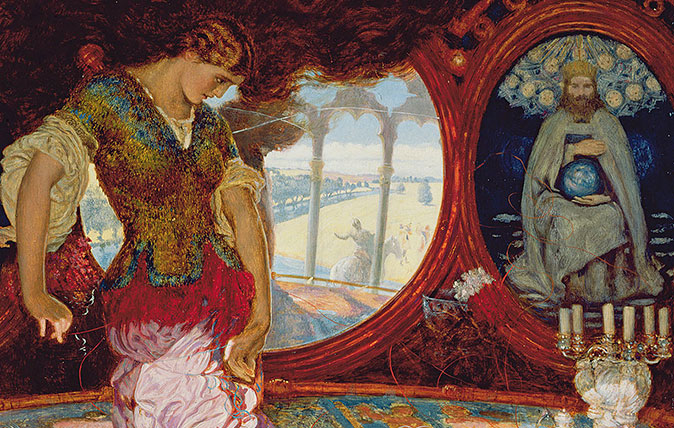The Blue Boy is back, a century after becoming the most expensive painting in history. Our arts columnist takes a look.
On Tuesday — exactly a century after it was last seen on public display in Britain on January 25, 1922 — The Blue Boy by Thomas Gainsborough returned on loan from the Huntington Art Museum, in San Marino, California, to the walls of the National Gallery, London.
It’s the first time it has travelled since 1922 and will remain on display here as part of a free exhibition until May 15. Athena would warmly encourage her readers to take advantage of the opportunity and that’s not only because this is a magnificent painting.
A Portrait of a Young Gentleman, as it was entitled when first exhibited to acclaim in the Royal Academy exhibition of 1770, is an artistic essay in the manner of Anthony Van Dyck (1599–1641), a defining figure in the tradition of British portraiture. It shows a full-length portrait of a boy — his identity is not known — staring straight out of the canvas at the viewer.

The Blue Boy (1770) by Thomas Gainsborough.
His 17th-century costume of rippling blue silk won the painting its familiar modern name by 1798. The boy stands against a dark background, with one hand placed confidently on his hip and the other holding a plumed hat. A shaft of light from high above illuminates his face, emphasising his ruddy cheeks and ruby lips.
This striking portrait grew steadily in celebrity over the 19th century and was loaned widely by the Duke of Westminster including, in 1908, to an exhibition of the best English art displayed in the Berlin Royal Academy to promote Anglo-German understanding. The status and celebrity it enjoyed were further illustrated in 1921 when the American railway magnate, Henry E. Huntington (1850–1927) purchased The Blue Boy for $728,000 — equivalent to around $11 million (or £8 million) adjusted for inflation. It was then the largest sum ever paid for a painting.
In a three-week valedictory exhibition at the National Gallery, 90,000 people travelled to see it. As the canvas was packed up, the director, hopeful that it would one day return, wrote ‘Au revoir’ in pencil on the back. And now it has.

Global fame? A 1967 stamp printed in Panama shows The Blue Boy by Thomas Gainsborough.
The irony of all this is that, for all its former celebrity as an icon of Englishness, The Blue Boy returns home in 2022 with vastly reduced popular recognition. Nor, Athena would venture, will it be easy for a modern viewer to see reflected in it much that they could identify with as English. We can enjoy this superb painting, in other words, but the idea of it as a mirror to our history and identity simply doesn’t ring true any more.

A portrait of the English artist Thomas Gainsborough (1727-1788) dating to around 1770. (Photo by Hulton Archive/Getty Images)
There are other works of art whose historic celebrity must mystify the modern viewer in much the same way; the Pre-Raphaelite Holman Hunt’s The Light of the World (1853) springs to mind. They challenge us to understand what previous generations saw in them. In the process, they should make us reflect on how puzzling our own cultural fixations might seem in the future.
The Blue Boy is on show at the National Gallery in London until May 15.

How Country Life helped track down a lost masterpiece by Gainsborough
Five years of fruitless searching had left the National Portrait Gallery almost abandoning hope of finding a lost Gainsborough painting,

In Focus: How Holman Hunt’s Lady of Shallot was inspired by Van Eyck’s greatest masterpiece
Holman Hunt was one of several pre-Raphaelites inspired by Jan Van Eyck's iconic The Arnolfini Portrait. Lilias Wigan takes an

In Focus: The strangely successful career of Dante Gabriel Rossetti, the artist ‘whose influence was far greater than his output warranted’
He may not have been the most talented member of the pre-Raphaelite Brotherhood, but Dante Gabriel Rossetti was easily the




